

Table of contents
- Shallow and deep rooters
- sun and shadow
- fruit tree species
- Free or bucket?
- Underplanting or plant neighbor?
Apple, pear, mirabelle plum - fruit trees are much more than an ornament in the garden and are very popular with many. The tree disc is the free space around the tree trunk. However, this often looks bare because not everyone dares to underplant fruit trees. In fact, there are a few things to keep in mind, because both the underplanting and the fruit trees can suffer if the wrong plants are chosen.
Shallow and deep rooters
An important factor in choosing the right underplanting for fruit trees is the growth form of their roots. If it is a flat-rooted plant, particular care must be taken when planting the root disc. Otherwise, the root system lying low under the ground could be damaged. There is also a risk that the plants will have to compete for water and nutrients and suffer as a result.
When planting under fruit trees, it is therefore worth first checking whether they are flat, deep or heart-rooted. Shallow roots include apples and pears as well as berry bushes. Appropriate information on the root shape of more unusual types of fruit can be obtained from specialist retailers.
sun and shadow
The larger the crown of the fruit tree, the more shade it provides - that sounds logical and obvious, but is not always considered when planting under. This is quite important so that the plants can thrive well. For fruit trees in tubs or on hills, we recommend plants that need a sunny or only partially shaded location. For the tree disc of large, densely grown trees, on the other hand, plants should be used for partially shaded to shady locations.
fruit tree species
In addition to the type of root growth and the lighting conditions at the location, other factors naturally also play a role in determining whether the underplanting is suitable for the fruit tree in question. These include:
- substrate
- water demand
- nutritional needs
- Any interactions between the fruit tree and the underplanting
The last point in particular should be noted. For example, if the underplanting releases essential oils or other substances, this can result in the fruit tree not flowering or harvesting. It may also be possible that insects necessary for pollination are deterred. In addition, the underplanting can absorb nutrients that the fruit tree then lacks. With the right plants, on the other hand, a positive interaction can be achieved. For example, some plant species are suitable for attracting bees to pollinate the flowers and thus potentially increase the harvest.
apple tree
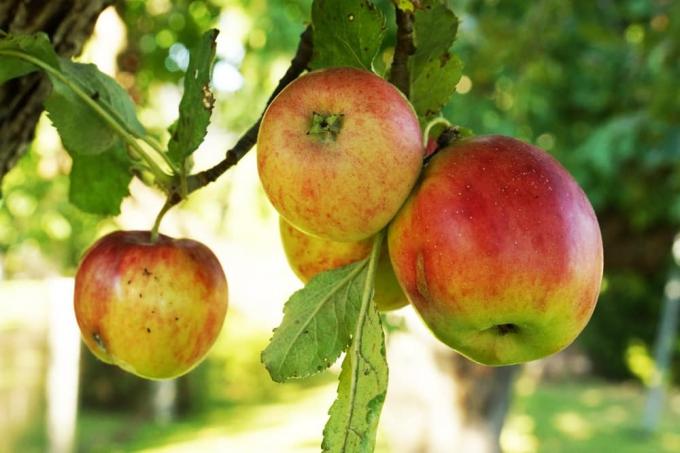
Planting under the apple tree in particular not only makes better use of the space in the garden, but also protects the tree from diseases. Suitable plants for this include:
- Columbine: Attracts insects and can thus improve pollination
- Berry bushes: Keep pests, such as rodents, away with their smell
- Monkshood: suitable but poisonous
- Nasturtium: Forms living mulch, keeps apple leaf suckers away
- Garlic: Reduces the risk of scab
- Dandelion: Reduces the risk of leaf chlorosis
- Rhubarb: Forms living mulch
- Marigold: Suitable and also useful as a medicinal plant, attracts insects
- Chives: Reduces the risk of scab
- Violet: Attracts insects
apricot
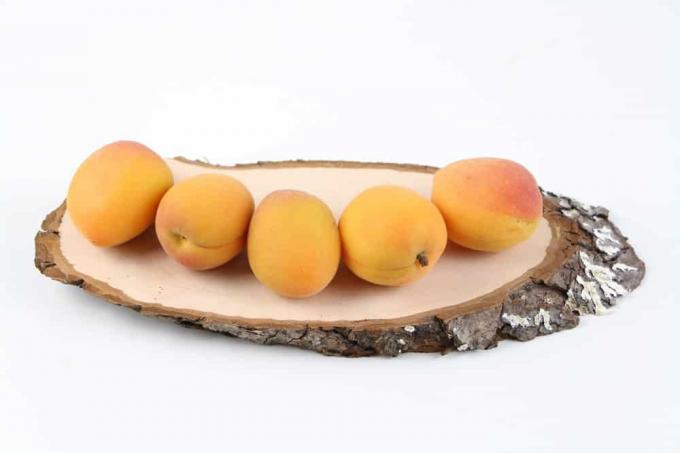
Among apricot trees fit among others:
- Nettle: To strengthen the tree and ward off aphids and ants
- Nasturtium: Effective against blood lice
- Melissa: Increases the health of the apricot tree
- Peppermint: Boosts the health of the apricot tree
- Calendula: Effective against blood lice
- Tomatoes: Keeps aphids, ants and other pests away
Pear

The following plants not only feel comfortable under the pear tree, they also have positive effects on the health of the plant:
- Thimble: Works against gum flow
- Geraniums: Attracts insects and can thereby improve pollination
- Nasturtium: Acts as a deterrent to aphids
- Dandelion: Reduces the risk of leaf chlorosis
- Deadnettle: As a living mulch and to protect the roots
cherry tree

The following plants are welcome to grow under the cherry tree if a positive effect is to be achieved with the underplanting:
- Nasturtium: To ward off aphids
- Garlic: To ward off aphids
- Lily of the Valley: Works against Monilia
- Melissa: Strengthens the tree
- Peppermint: Strengthens the tree
- Red Foxglove: Can prevent gum flow
- Chives: To ward off aphids
Mirabelle
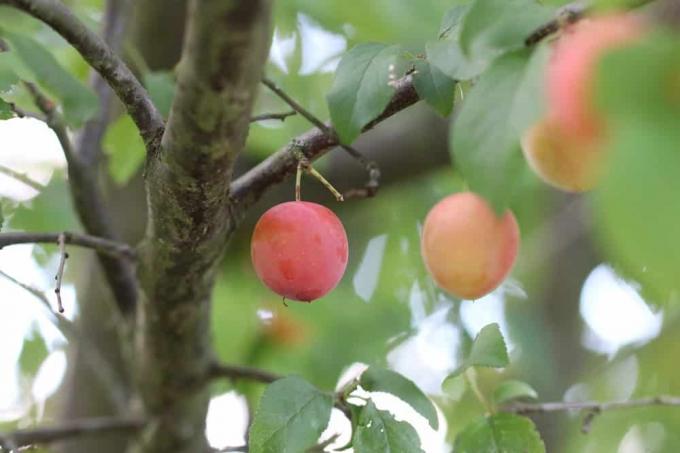
So that the delicious fruits can be harvested in large numbers and the plum tree stays healthy, the following plants are recommended for underplanting:
- Onion: Keeps pests away, among other things
- Garlic: To ward off aphids
- Geranium: Attracts beneficial insects for pollination
- Clover: Forms living mulch
- Mustard: Repels pests
peach
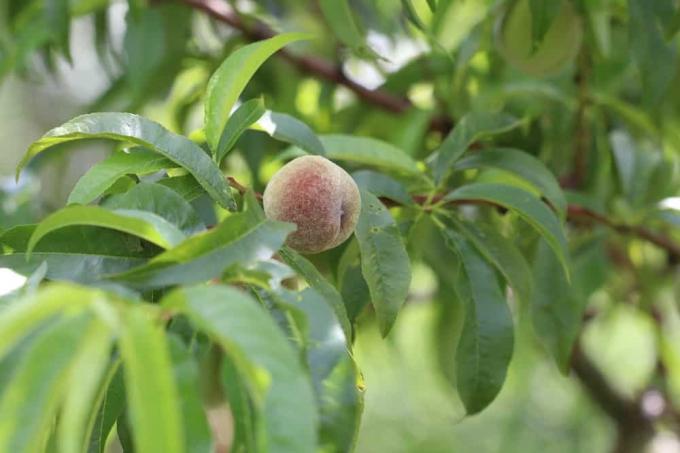
They should be sweet and juicy and best harvested fresh from the tree. If you want to do something good for the peach tree, choose one or more of the listed suitable plants for the underplanting:
- Garlic: Attracts beneficial insects and keeps pests away
- Nasturtium: Helps against bacterial blight and leaf curl
- Tomatoes: Effective against aphids, ants and other pests
- Horseradish: Against pests and leaf curl
plum and damson

Plums and damsons sweeten our summer. The drupes can also be attacked by diseases and pests. The right underplanting helps the fruit tree to grow strong and healthy and to produce the highest possible yield:
- Lamb's Lettuce: Covers the soil and thereby retains moisture, attracts earthworms
- Garlic: Keeps pests away and attracts beneficial insects
- Larkspur: Attracts beneficial insects but is poisonous
- Report: Suitable as a vegetable and protects the soil, forms living mulch
- Phacelia: Attracts bees and serves as green manure
- Lesser Celandine: Serves as soil protection and to attract bees, forms live mulch
Free or bucket?
For the underplanting and the advantages of it, it is not absolutely necessary that the plants are actually planted on the tree pit. The plants can also be cultivated in pots and placed on it. This method even offers some advantages:
- Can be combined with plants that have different substrate and care requirements
- It is possible to plant plants that are not winter or frost hardy
- The risk of damage to the roots is eliminated
- The plants can be exchanged quickly
A possible disadvantage, however, is that the plants no longer serve as green manure and also - for example in the case of lamb's lettuce - have no positive influence on the soil quality. It is therefore necessary to weigh up which factors play the greater role in each case.
Underplanting or plant neighbor?
All of the plants mentioned do not have to sit directly on the tree grate in order to unfold their positive effects. They can also have a beneficial effect on fruit trees if they are merely their planting neighbors - that is, planted in close proximity.
 garden editorial
garden editorial I write about everything that interests me in my garden.
Learn more about fruit trees
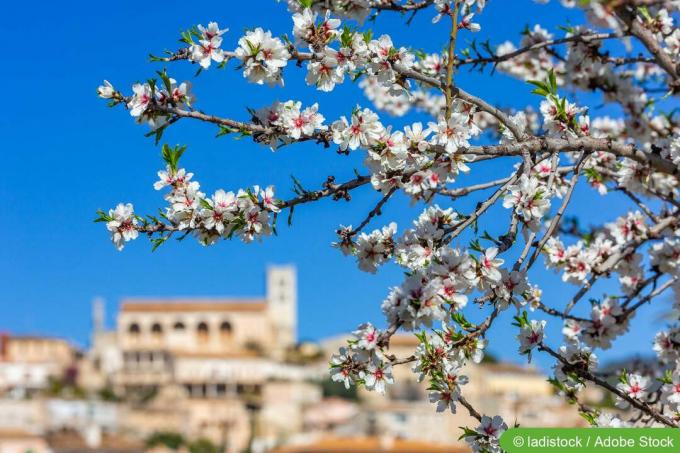
Life on Mallorca: highlight almond blossom
Life on Mallorca offers a lot more than sun, summer, beach and Ballermann. The beginning of the year on the popular holiday island is all about blossoming almond trees. We'll tell you when and where you can best enjoy the almond blossom on Mallorca.

Cutting sour cherries: 21 tips for the right cut
In order for a sour cherry to remain productive year after year, it must be pruned regularly. Wood that has been removed must be removed and new fruit wood must be promoted. This only works if the "editor" knows the editing rules.

Is the ornamental peach edible? | 15 tips for care and cutting
The ornamental peach can be a decorative addition to the garden as early as March, when the trees, which are up to three meters high, are in bloom. Here we tell you how to look after them and whether their fruits are edible.

20 old apple varieties | List of old apples in & around Germany
Hardly any type of fruit is as diverse as the apple. The number of apple varieties worldwide is estimated at over 20,000. Old apple varieties are those that were discovered before 1950. We have compiled a list of popular, old varieties for you.
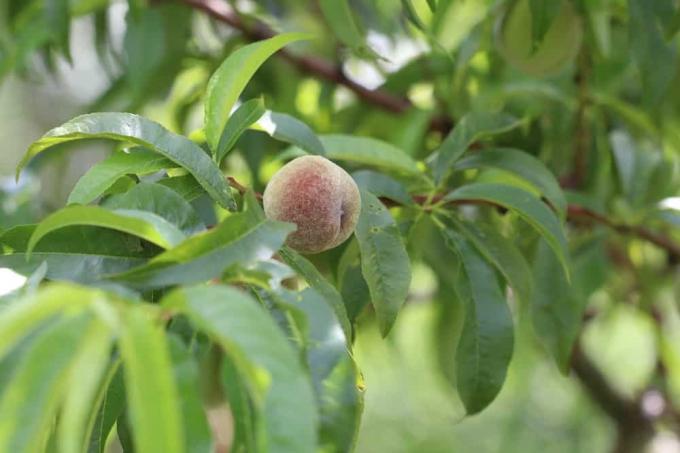
Peach Tree Diseases: Leaves curl or turn yellow
Among the fruit trees, the peach tree is one of the most susceptible to diseases. It often has to contend with fungal diseases such as curling disease. Here you can find out which other tree diseases can affect it, how to recognize them and how to fight them successfully.

Half-trunk cherry and apple trees: planting distance and care
Fruit trees definitely belong in every garden. But what to do if the garden is too small for a large tree? Then trees that were grown as half-stems can help. They take up less space, but deliver lots of fruit. More about this here.



